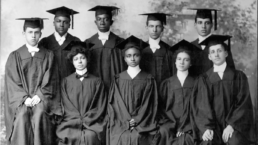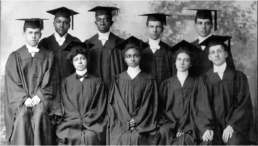‘Tell Them We Are Rising’ Review: The History of America’s Black Universities
Using the past as building blocks for a stronger future.
The special environment that these colleges and universities provide is an unapologetic space where these young black adults can finally experience the feeling of being in the educational majority.
There is no doubt that we are living in a very politically stirring time right now– its reflection is not only seen on the streets but also on the screens at the Sundance Film Festival. Documentaries especially have seemed to take on a larger cultural importance, one of which is the film “Tell Them We Are Rising: The Story of Black Colleges and Universities.” Renowned director and recipient of the National Humanities Medal from former President Barack Obama, Stanley Nelson takes the audience on an educational journey through the genesis of black colleges in America and how they hold up today.
Unlike other social commentaries on the oppression of African-Americans throughout history, “Rising” directs its attention on how, after the Civil War and end of slavery, formerly imprisoned blacks were able to self-sufficiently create schools and a pathway to higher learning. While we are familiar with the physical abuse that was associated with slavery, the prevention of learning and stunted intellectual knowledge was another often overlooked mistreatment. It was, in fact, illegal for white slave owners to “teach” their slaves how to read or write, therefore making those two skills extremely valuable once they were finally freed.
Unlike other social commentaries on the oppression of African-Americans throughout history, “Rising” directs its attention on how, after the Civil War and end of slavery, formerly imprisoned blacks were able to self-sufficiently create schools and a pathway to higher learning.
From its origin, Nelson leads us through time as we see an abundance of archival footage of former slaves, both men and women, reading books for the very first time. From children’s school photos and tiny shacks they called a classroom, to pictures of the very first African-American graduates, the rise and accessibility of getting an education slowly lifted the community out of poverty– and essentially creating the black middle class. Of course, this road to success wasn’t without segregated roadblocks and racist attacks which resulted in death for both black people and the white people who supported them.
“Separate but Equal,” one of the clauses of The Fourteenth Amendment, is cast in an interesting light as the film points out that there can never be a situation in which separate can really be equal; while the creation of Historically Black Colleges and Universities (HBCU) may sound like another way of enacting an overturned law, we see just how important and valued these campuses were for students back then and still are for those who continue to enroll today. The special environment that these colleges and universities provide is an unapologetic space where these young black adults can finally experience the feeling of being in the educational majority. Some interviewees admit to never even having a black teacher until they enrolled in an HBCU. In turn, the faculty has a greater understanding of the struggle and a commitment to each students’ success. Understanding how far they have come as a whole, many educators and students feel a strong sense of responsibility to keep HBCUs going, using the past as building blocks for a stronger future.
Morgan Rojas
Certified fresh. For disclosure purposes, Morgan currently runs PR at PRETTYBIRD and Ventureland.


